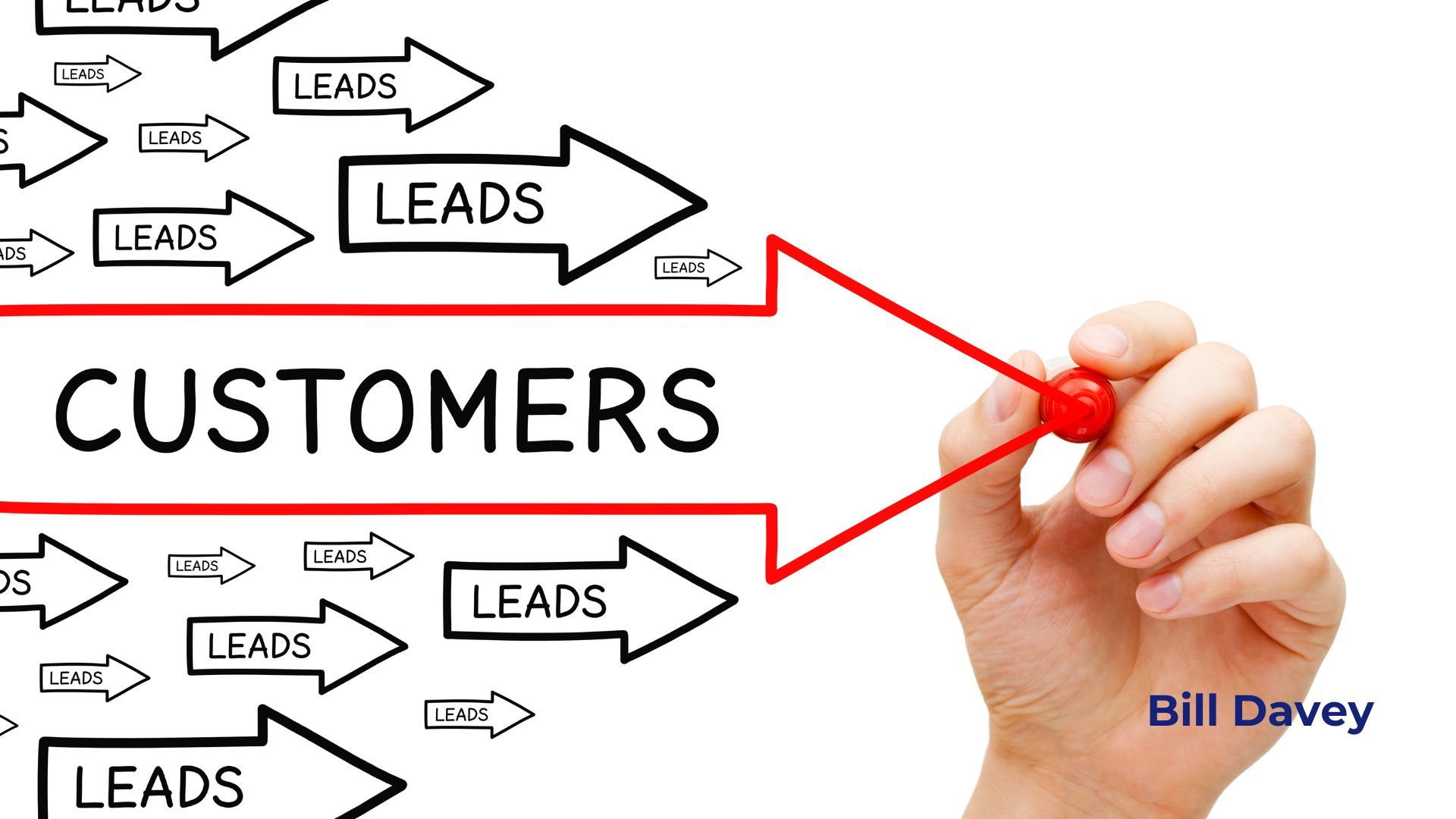By Bill Davey
•
August 28, 2024
In today’s digital age, data analytics has become an indispensable tool for businesses looking to enhance their lead generation strategies. By leveraging data insights, companies can make informed decisions, optimize their efforts, and achieve better results. The ability to analyze patterns, behaviors, and trends allows businesses to refine their lead generation process and ensure that their marketing efforts are hitting the mark. In this blog post, we will explore the importance of data analytics in lead generation and how to utilize it to improve your strategy. 1. Understanding the Role of Data Analytics in Lead Generation Data analytics involves the examination of data sets to draw conclusions about the information they contain. This process is crucial in lead generation as it allows businesses to understand the effectiveness of their strategies, identify areas for improvement, and make data-driven decisions. The benefits of data-driven decision-making include: - Improved accuracy in targeting potential leads. - Enhanced ability to track and measure the success of marketing campaigns. - Better resource allocation and budget management. - Increased understanding of customer behavior and preferences. 2. Setting Clear Objectives To effectively use data analytics in lead generation, it is essential to set clear objectives. This includes defining what you want to achieve with your lead generation efforts, aligning data analytics with your business objectives, and identifying key metrics to track. These metrics could be: - Number of leads generated. - Conversion rates. - Cost per lead. - Customer lifetime value. By having clear objectives, you can focus your data analytics efforts on the areas that matter most to your business. 3. Collecting and Centralizing Data Data collection and centralization are critical steps in the data analytics process. There are numerous sources of lead generation data, including your website, social media platforms, email campaigns, and CRM systems. To gain comprehensive insights, it is important to collect data from all relevant sources and centralize it using integrated tools and platforms. This allows for easier analysis and ensures that all data points are considered in your decision-making process. 4. Analyzing Website Performance Your website is often the first point of contact for potential leads, making it essential to analyze its performance thoroughly. Tools like Google Analytics can help you track: - Website traffic. - User behavior. - High-performing landing pages. - Bounce rates. By understanding how visitors interact with your website, you can identify areas for improvement and optimize your site for better lead generation. 5. Evaluating Content Marketing Efforts Content marketing plays a crucial role in lead generation, making it essential to evaluate its effectiveness. Analyzing engagement metrics such as page views, time on page, and social shares can help you determine which content resonates most with your audience. Additionally, you can use tools to track the performance of different types of content, such as blog posts, videos, and infographics. Based on these insights, you can refine your content strategy to better meet the needs of your target audience. 6. Assessing Social Media Campaigns Social media platforms are powerful tools for lead generation, but it is important to assess the effectiveness of your campaigns regularly. Tracking metrics such as likes, shares, comments, and click-through rates can provide valuable insights into which posts and campaigns are performing well. By identifying top-performing content and adjusting your strategy accordingly, you can enhance your social media lead generation efforts. 7. Monitoring Email Campaigns Email marketing remains one of the most effective lead generation channels, making it crucial to monitor your campaigns' performance. Analyzing email metrics such as open rates, click-through rates, and conversions can help you understand what works and what doesn’t. Segmenting your email lists and personalizing your content based on these insights can result in higher engagement and lead conversion rates. 8. Utilizing CRM Data Customer Relationship Management (CRM) systems are valuable tools for lead generation, as they centralize lead data and interactions. By tracking lead behavior and preferences, you can personalize your communication and improve your lead nurturing efforts. This results in a more effective lead generation strategy and higher conversion rates. 9. Performing A/B Testing A/B testing involves comparing two versions of a marketing asset to determine which one performs better. It is an essential part of the data analytics process as it allows you to make data-driven improvements. Setting up and running A/B tests on landing pages, email subject lines, and calls-to-action (CTAs) helps you identify what resonates most with your audience and optimize your lead generation efforts. 10. Implementing Predictive Analytics Predictive analytics uses historical data to forecast future behavior and outcomes. In the context of lead generation, predictive models can help you forecast lead behavior, enhance lead scoring, and prioritize high-potential leads. By leveraging predictive analytics, you can make more informed decisions and improve your lead generation strategy. 11. Optimizing Budget Allocation Data analytics can provide insights into the ROI of various lead generation channels, allowing you to optimize your budget allocation. By tracking the performance of different channels, you can shift your budget to high-performing activities and ensure that your marketing efforts are cost-effective. Investing in data-driven marketing efforts results in better lead generation outcomes and higher returns. 12. Ensuring Data Privacy and Compliance Data privacy is a critical consideration in lead generation, especially with regulations such as GDPR and CCPA in place. Ensuring compliance with these regulations involves obtaining proper consent, being transparent in your data collection practices, and implementing data protection measures. By adhering to data privacy laws, you build trust with your audience and avoid potential legal issues. 13. Continuous Improvement and Adaptation The lead generation landscape is constantly evolving, making it important to continuously review and improve your strategies. Periodically analyzing your data, gathering feedback from leads, and staying updated with industry trends allows you to make iterative changes based on insights. This ensures that your lead generation strategy remains effective and adaptable to changing conditions. Conclusion Utilizing data analytics in your lead generation strategy can significantly enhance your efforts and drive better results. By setting clear objectives, collecting and centralizing data, analyzing various aspects of your marketing efforts, and making data-driven improvements, you can optimize your lead generation process and achieve sustained business growth. Embrace the power of data analytics and transform your lead generation strategy today.


















